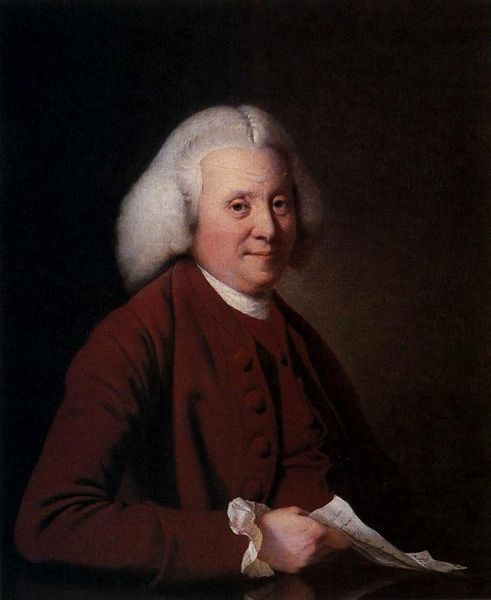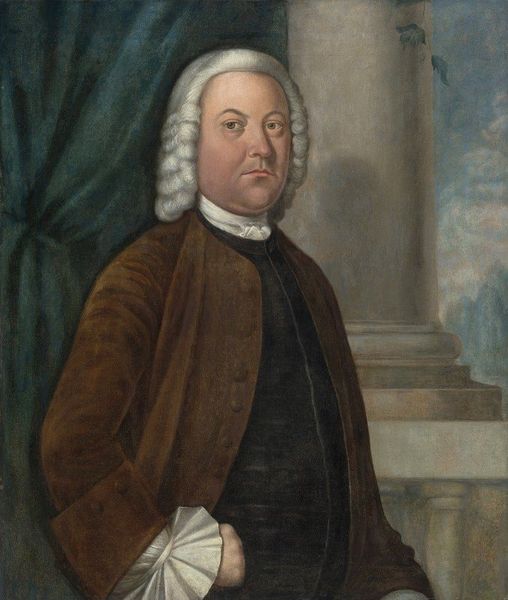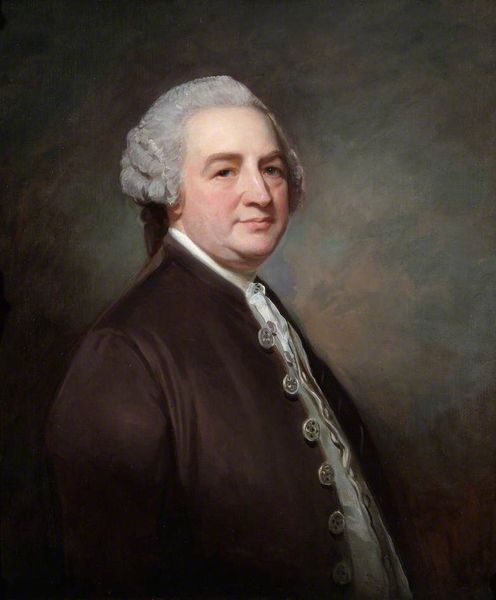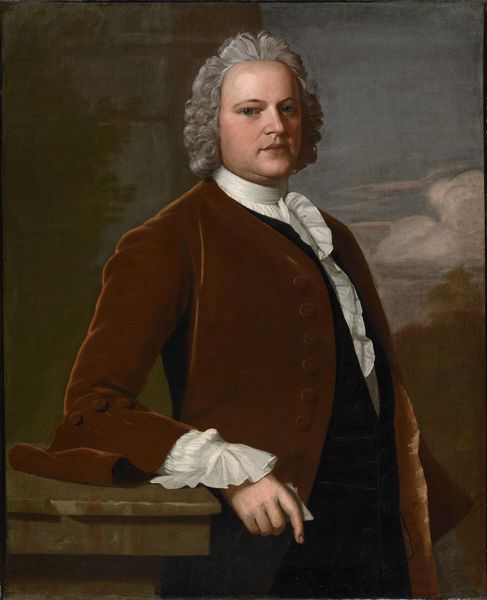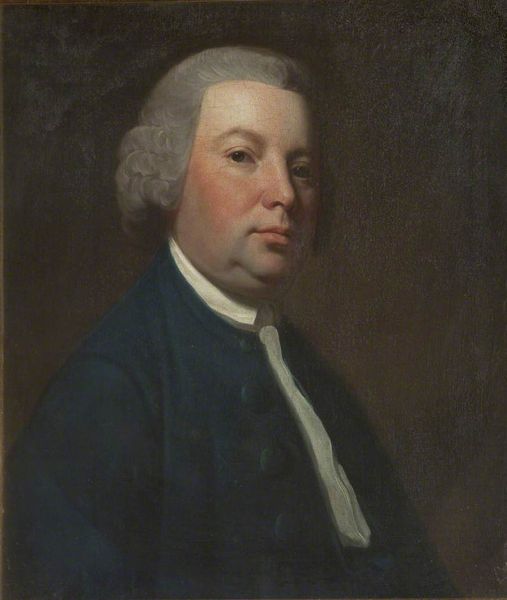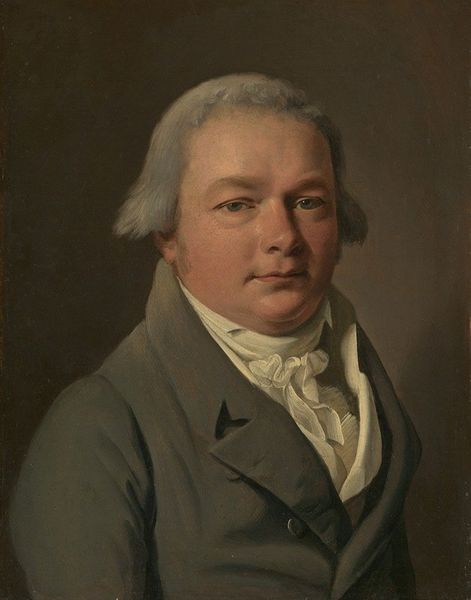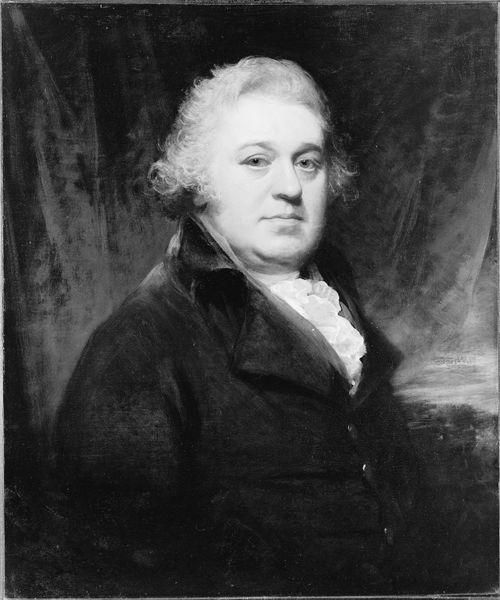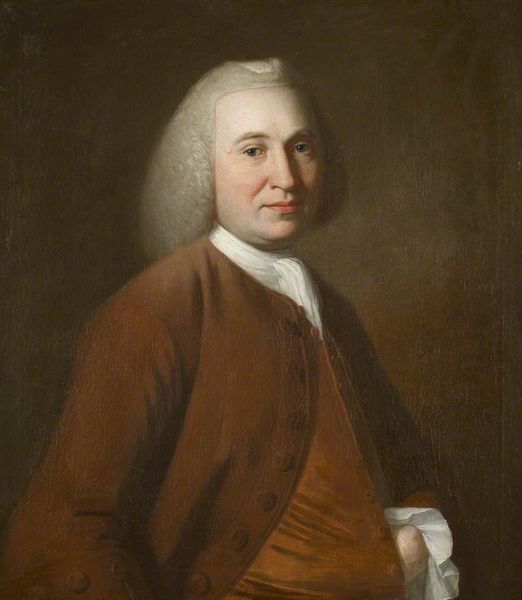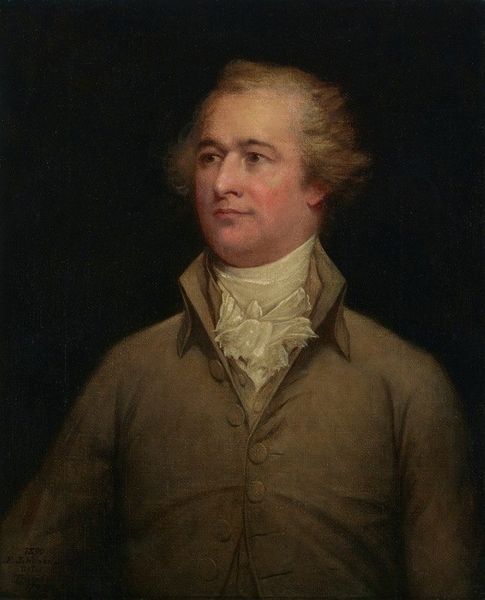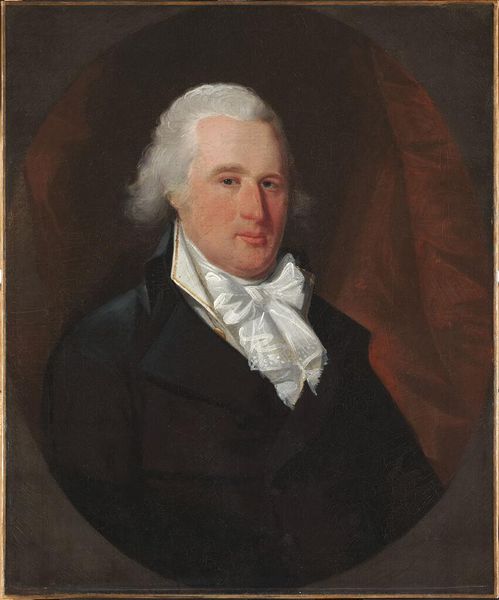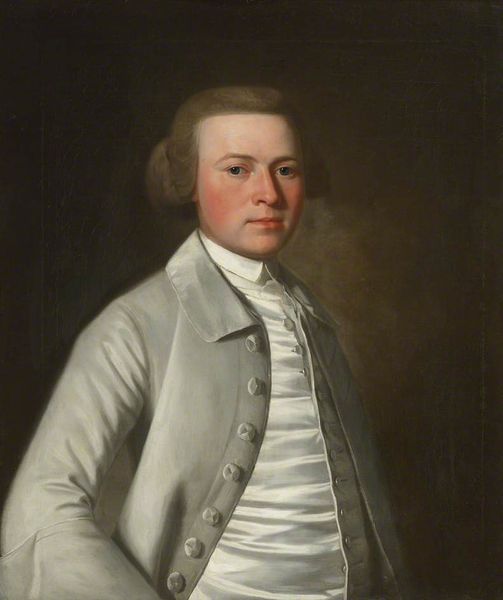
Copyright: Public domain
Curator: This is George Romney's portrait of Charles Strickland, painted around 1770. Strickland was a notable figure of his time; the portraits commissioned speak to his prominent status. Editor: My immediate reaction is the light. Notice how it's skillfully employed to soften his features, almost creating an ethereal glow around the subject. The painter’s hand seems gentle. Curator: Indeed, the soft light is a hallmark of the Rococo influence in British portraiture at the time. This was also during a period when artists aimed to depict sitters as refined and genteel, which very much played into the political atmosphere and desires of those in power and aspiring to it. Editor: Looking closely at his attire, it's simple, yet elegant, with that beautiful shade of brown. The composition directs all focus on him. This creates a fascinating contrast; a seemingly plain man is rendered exceptionally. Curator: Portraits were also a form of social and political performance. A gentleman had to present himself in a specific manner, a role. Commissioning a portrait ensured legacy. Editor: And the textures! Note how Romney captured the soft texture of the wig versus the texture of the cloth of his jacket. He almost gives volume to this two dimensional plane. It is quite fascinating. Curator: Precisely. Portraits such as this provide insight into the values and aspirations of 18th-century British society. Beyond aesthetics, the work reminds us of the constructed nature of identity during the period. Editor: Seeing it through the lens of composition and color makes you appreciate the work as something to admire aesthetically, and not just because of history. I wonder, who was this Charles Strickland, really? Curator: A very pertinent question. It highlights the inherent problem in portraiture – what we are shown and what is kept hidden. I think the answer may be in other historical archives beyond art. Editor: A good way to sum it up –art as a bridge, as always, to more profound reflections.
Comments
No comments
Be the first to comment and join the conversation on the ultimate creative platform.
